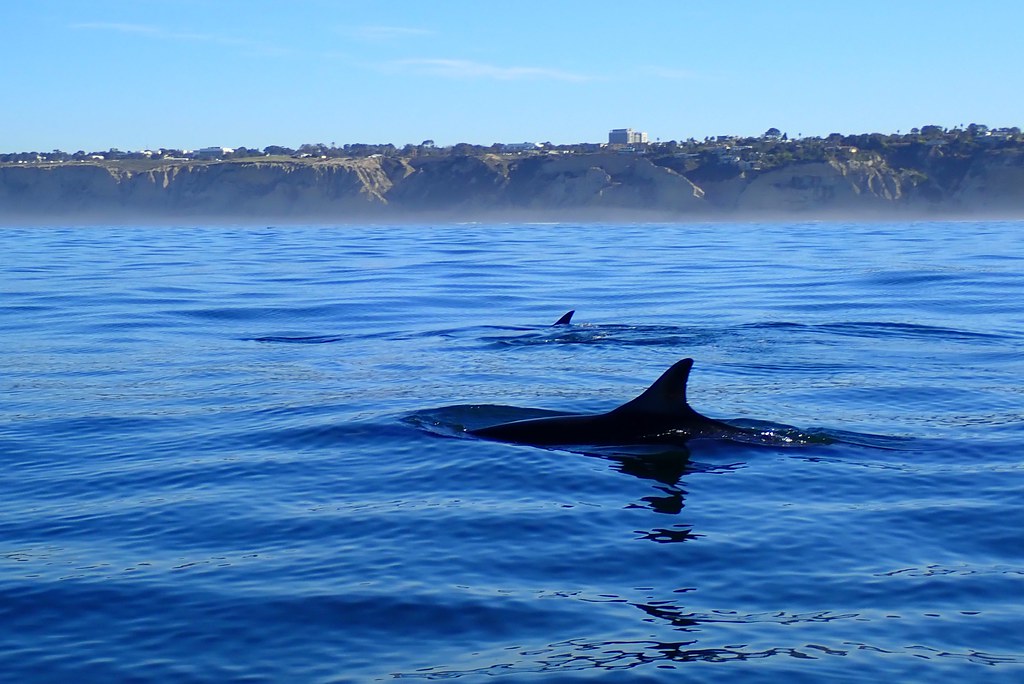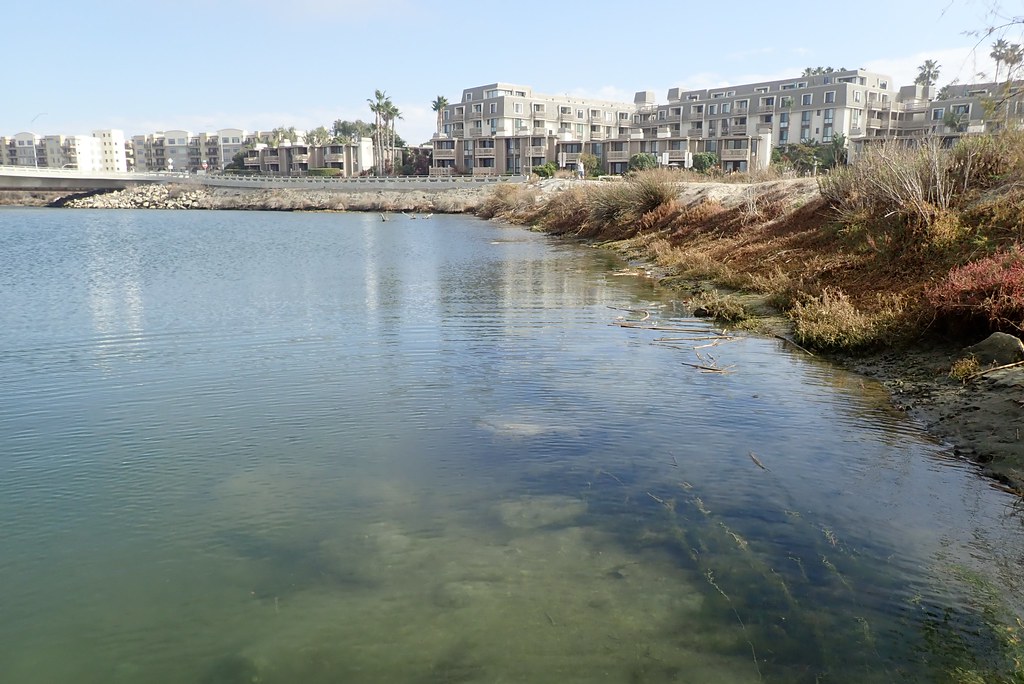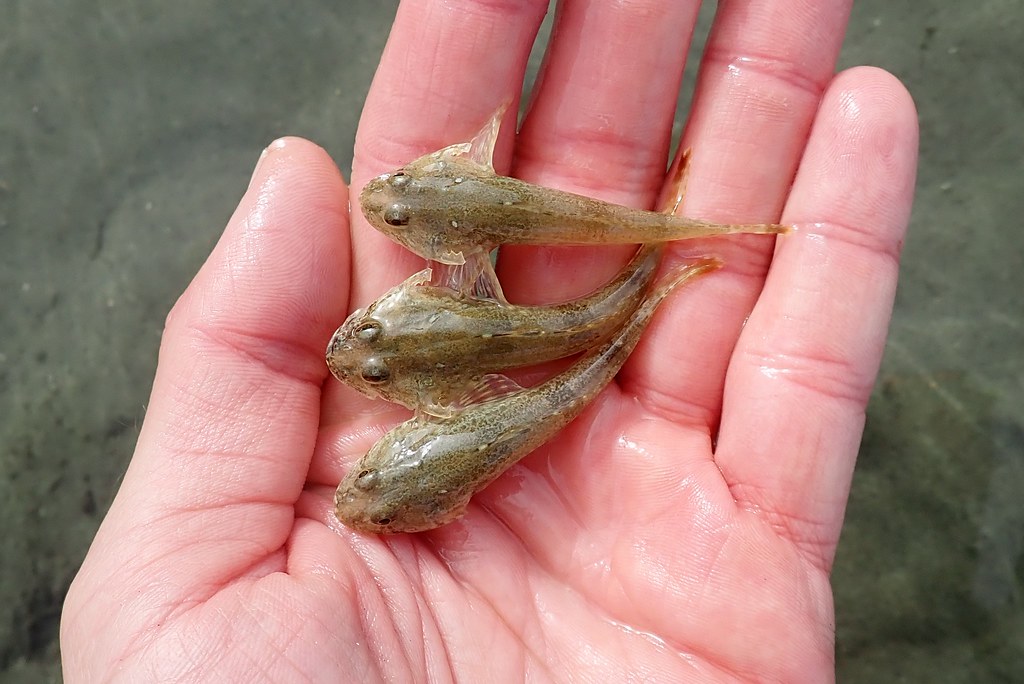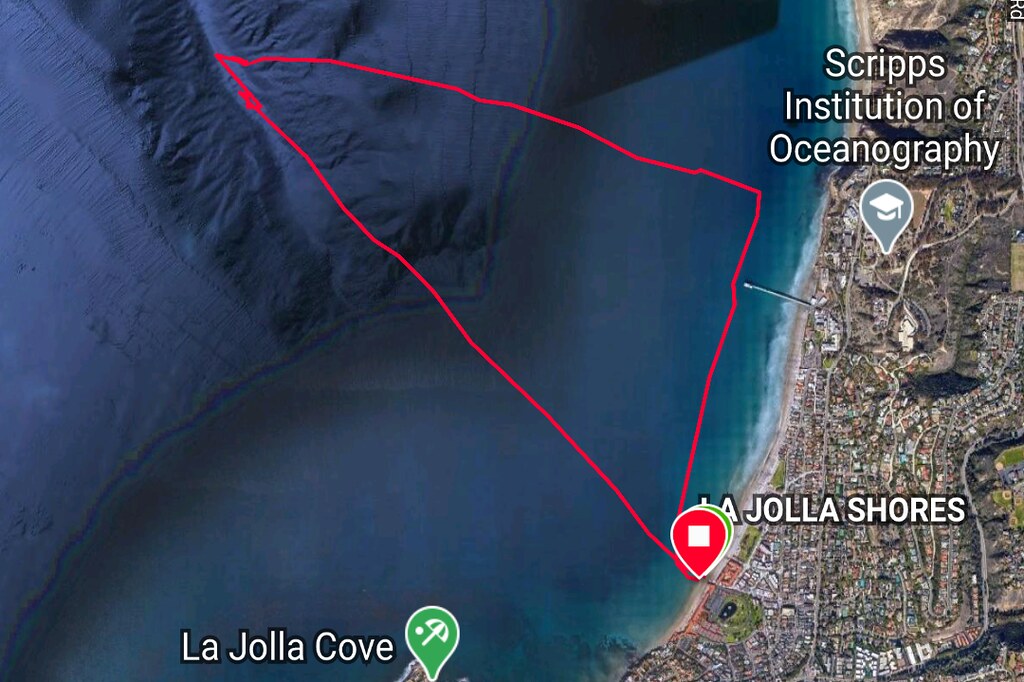
I drove down to Mission Bay after dark, turned on my headlamp, and got to work looking for reef finspot heads poking out from under the rocks. Vince showed up and joined in the search. He spotted the first one and pointed it out for me to catch. In other words, I basically did none of the work for this one!
Reef Finspot (Paraclinus integripinnis) - new hook & line species #704

I was determined to find a reef finspot of my own, and as the tide dropped further I started to see them. In the next hour I caught 3 or 4 more individuals, which greatly helped my self esteem.

The next weekend I took the kayak to La Jolla to give deep dropping another try. There's a list of flatfish in the California fishing regulations that are open year-round and can be caught from any depth, and of course there are always weird fish that don't make it into the fishing regulations. It was a beautiful day with lots of dolphins and birds around.

I'm a big fan of Google Maps satellite view for finding fishing spots, but recently I've been using Google Earth instead. The two websites are very similar, but Google Earth lets you rotate the view to help you see 3D structure, and it shows the ocean depth wherever you move the mouse pointer. I picked out a couple of small humps in the bottom of the canyon. The first was only 2 miles from the launch, so it was a quick paddle. I dropped a rig down 1150 feet with a chum cage filled with chopped up sardines, a green strobe light, and hooks baited with sardine chunks. I let it sit for a while, and then I slowly paddled around so the 16 oz sinker dragged along the bottom. The rod tip bounced lightly a few times, I lifted the rod up, felt a little more weight on the line, and then reeled up 1150 feet without slowing down or taking a break. I did not want that fish coming off! When I got it to the surface I saw that it was not a flatfish and not a rockfish. It was a sablefish, or black cod, the species that motivated Eli and I to give deep dropping a try nearly 6 years ago!
Sablefish (Anoplopoma fimbria) - new hook & line species #705

I fished another small hump in 1100 feet and caught a second sablefish. As exciting as they were, they're currently out of season and have the same depth restrictions as rockfish, so I needed to keep moving spots to try for something else. I moved away from the humps and slowly dragged my rig along the edge of the canyon slope. Flatfish like slopes, right? I got one more bite but wasn't able to set the hook. It felt similar to the sablefish, so I'm guessing that's what it was.

The dolphins stopped by to say hello periodically throughout the day. They thought it was fun to swim under my kayak, and occasionally one would bump my line, which was very exciting for a split second. If you want to see what a dolphin looks like on a fish finder, see below.

I wanted to add a few extra miles to my day, so I paddled towards Blacks Beach and then turned south to go by the Scripps Pier. I've kayaked La Jolla dozens of times, but this was my first time taking a good look at the pier. A lot of cool research goes on there!

It was an easy day, with low swell and almost no wind. I got to finally see a species that I've been reading about for 6 years, and for that I am very grateful. La Jolla Canyon is still a huge mystery to me, but after today I feel like it's starting to share some of its secrets.
It's turning into quite the busy month! I didn't plan to fish again over the 3 day weekend, but I couldn't pass up an easy new species. Chris, Carson, and Brayden were in town, and on their way out I sent them to one of my spots for cheekspot goby and mussel blenny. They fished the spot, but they reported back that all they could catch were staghorn sculpins. I don't have staghorn sculpin on my list, so needless to say I packed the car and headed up there!

The tide was higher than I liked, and the afternoon wind was making it hard to sight fish. I moved down to a corner where there was a small break from the wind. Per Chris's instructions, I dragged a bait around the bottom and made sure to drag the split shot and bait over ghost shrimp burrow mounds. Like magic a sculpin appeared and grabbed my bait.
Pacific Staghorn Sculpin (Leptocottus armatus) - new hook & line species #706

Once I had the technique figured out, it wasn't hard to catch more. I caught 3 more sculpin all around the same size. They do get bigger, probably over a pound, but in this case I'll take what I can get.

After I released them I was able to get an underwater photo of one of them blending in with the bottom. Even though they have excellent camouflage, they actually spend most of their time burrowed under the sand so that they're completely invisible. They're a cool species!

The month still isn't over. Can I get another new one?
